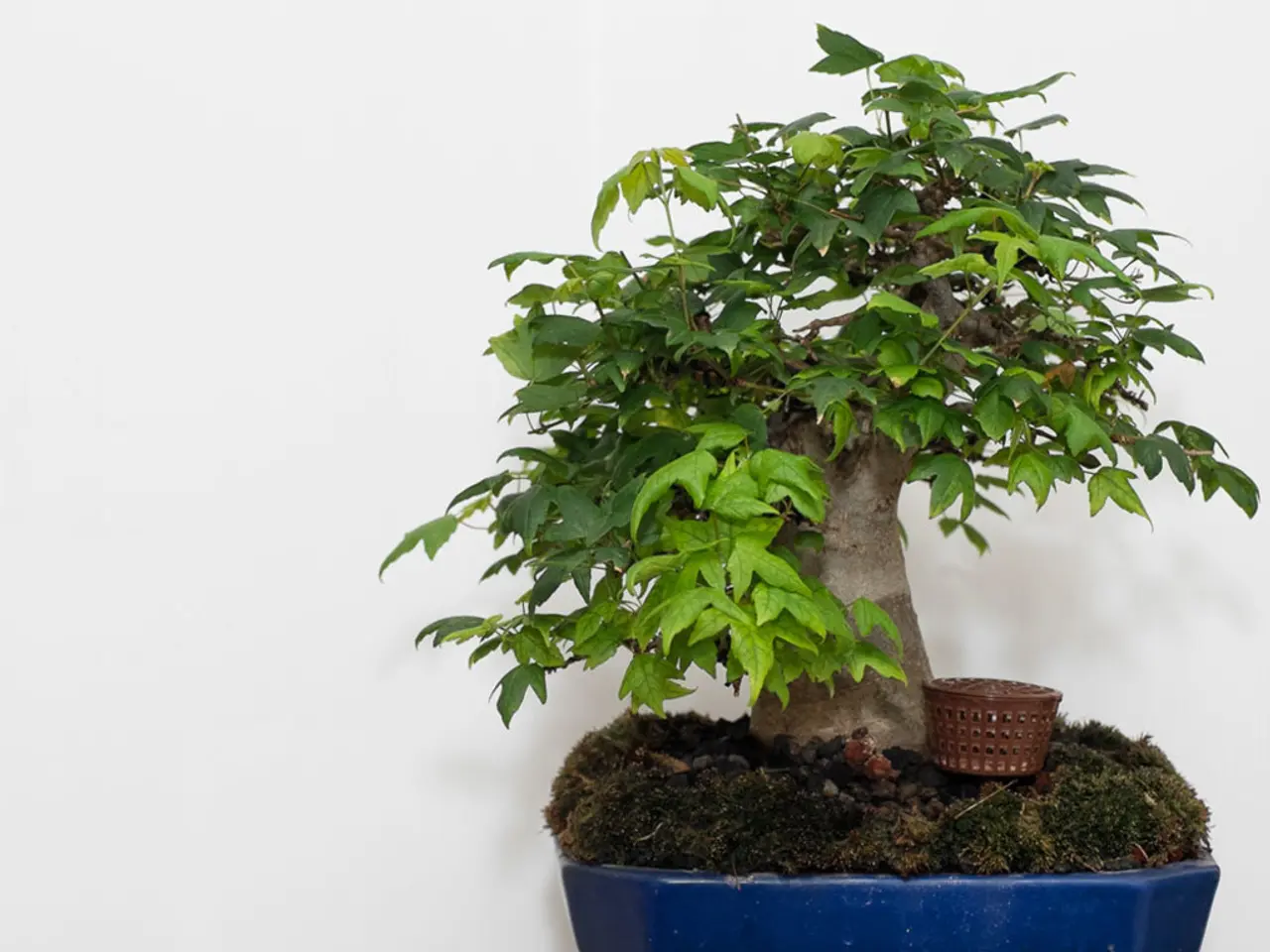Bonsai Soil Blend Ingredients: Examining Their Functions and Advantages
In the world of bonsai, a tree's health relies heavily on its soil mix. A complex network of microorganisms thrives in this soil, playing a vital role in maintaining soil fertility and supporting the overall health of the bonsai tree.
Organic components like Composted Bark, Leaf Mold, and Peat Moss release nutrients, retain moisture, and support beneficial microorganisms. However, for a well-draining bonsai soil mix, certain inorganic components are indispensable.
Lava rock, or pumice, is a lightweight volcanic rock that provides good aeration, water retention, and drainage. It is durable and commonly used in bonsai mixes. Calcined clay, such as Bonsai Block, is clay that has been heated to become porous and lightweight, excellent for moisture retention without becoming waterlogged. It improves structure and helps hold nutrients while draining excess water. Coarse grit or sharp sand enhances drainage, preventing soil compaction and waterlogging, which is critical in bonsai soil where aeration is key.
These inorganic components avoid heavy organic matter like peat or sphagnum moss, which retain too much moisture and risk root rot. A well-balanced bonsai soil mix often contains about 40% lava rock, 40% calcined clay, and 20% organic fines (such as pine bark) to maintain aeration, drainage, and some water retention. For bonsai needing very fast drainage (e.g., succulents), more grit and calcined clay and less organic matter is used.
Creating your own bonsai soil mix is possible, but buying pre-mixed soil from a reputable supplier can guarantee a precisely balanced blend. It's important to note that regular potting soil lacks the specialized balance of drainage, aeration, and nutrient retention essential for bonsai trees, potentially leading to waterlogging, root rot, and nutrient deficiencies.
The ideal pH level for a bonsai soil mix is slightly acidic to neutral, ranging from 6.0 to 7.0. A balanced mix of inorganic and organic components supports prime bonsai development, healthy root growth, and overall tree vitality.
Inorganic components like Akadama, Pumice, and Lava Rock provide excellent drainage, aeration, and prevention of waterlogging. To prevent pests from inhabiting the bonsai soil mix, incorporate natural deterrents like cinnamon, neem oil, or diatomaceous earth, and maintain good hygiene practices.
The benefits of a thriving microbial community include improved soil fertility, enhanced nutrient retention, increased resistance to disease, improved soil structure, and support for beneficial mycorrhizal relationships. Achieving a well-balanced bonsai soil composition is essential for prime bonsai development, as it directly impacts root growth and overall health.
Incorporating natural deterrents like cinnamon or diatomaceous earth into a bonsai soil mix can help prevent pests from inhabiting the soil. The ideal pH level for a bonsai soil mix is slightly acidic to neutral, ranging from 6.0 to 7.0. A balanced bonsai soil composition, consisting of inorganic components like Akadama, Pumice, and Lava Rock along with organic fines, supports prime bonsai development, healthy root growth, and overall tree vitality.




